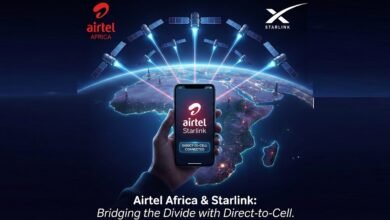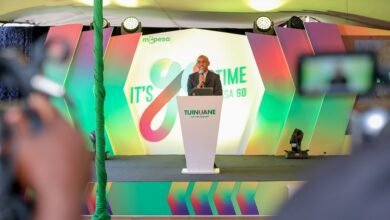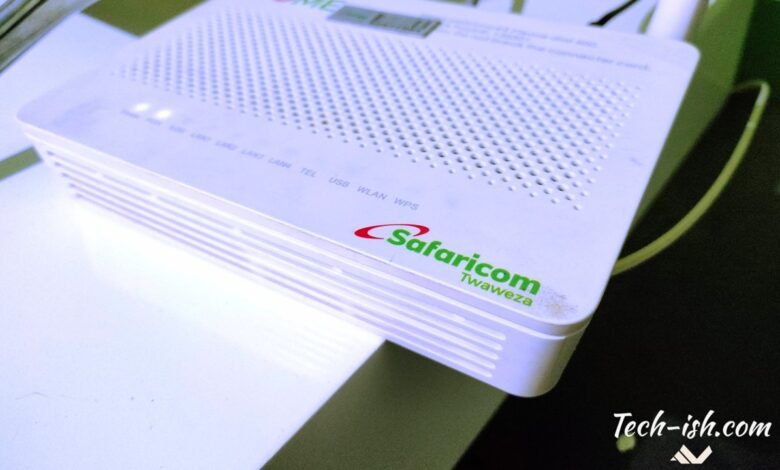
Kenya’s fixed internet story is starting to feel like that friend who’s always “on the way” but never actually shows up. According to the Digital 2025 July Global Statshot Report by Datareportal (powered by Ookla and Meltwater), global fixed internet speeds have just passed a massive milestone: the typical connection worldwide now delivers more than 100Mbps.
That’s the good news, at least for everyone else.
Here at home, though, Kenya finds itself in uncomfortable company on the global charts. Out of 153 ranked countries, Kenya sits at 145th, with a median fixed download speed of just 15.40Mbps. To put that into perspective, the world average is 102.48Mbps. Our speeds are closer to those in conflict-stricken or infrastructure-poor regions like Cameroon (10.96Mbps), Ethiopia (10.82Mbps), and Namibia (14.60Mbps), than to our global peers. And indeed, with the biggest player in the country, Safaricom, offering fixed internet packages as low as 5Mbps, it speaks volumes.
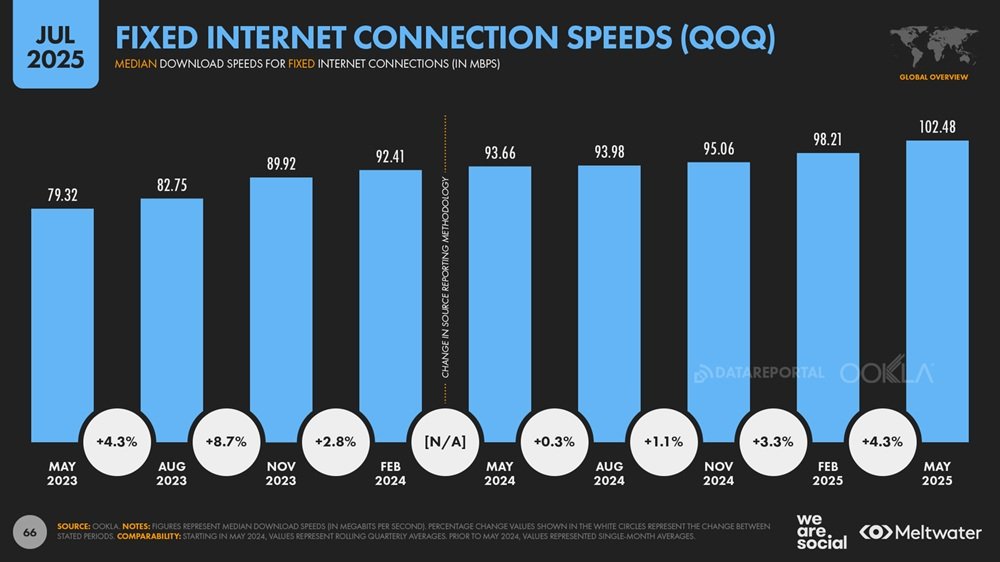
Africa’s Slow Lane
Africa still lags painfully behind the rest of the world when it comes to wired internet. The bottom of the table is stacked with African countries: Ethiopia, Libya, Cameroon, Namibia, Kenya, and Tunisia all rank in the slowest 10.
This paints a sobering picture of the continent’s fixed broadband ecosystem. It’s not just about speeds. It’s about penetration too. Back in August, we highlighted how only 0.6% of rural Kenyan homes have fixed internet connections. When so few households can even access a connection, it almost doesn’t matter how fast it is. And when the few who do get connected are stuck at speeds that barely scratch 15Mbps, it raises questions about whether fixed internet is really worth the investment here.
Compare that with Singapore, where the average household connection clocks in at a dizzying 372Mbps. Or France (315Mbps), the UAE (314Mbps), and Hong Kong (310Mbps), where 4K streaming, cloud gaming, and remote work feel seamless rather than stressful. Even the U.S., which often gets flak for patchy rural broadband, averages 289 Mbps, almost 20 times faster than Kenya.
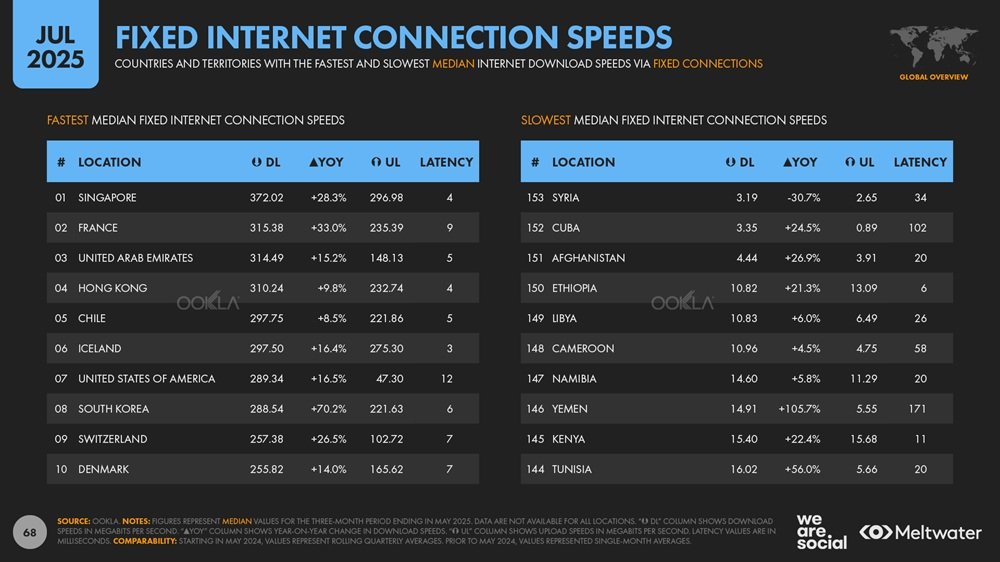
On the brighter side, Kenya’s speeds grew by +22.4% year-on-year, one of the stronger improvements across Africa ahead of Ethiopia’s +21.3%. Compare that to Cameroon’s modest +4.5% growth, or Namibia’s +5.8%, and it shows Kenya is at least moving in the right direction. Even at 16.02 Mbps, Tunisia (+56.0%) and Yemen (+105.7%) posted bigger leaps, but Kenya’s steady climb suggests that infrastructure upgrades and competition from Safaricom, Zuku, and Faiba are starting to pay off, just not fast enough to lift us out of the global bottom tier yet.
Why is Kenya Still Crawling?
Kenya’s fixed internet woes are no secret. As we reported earlier this year, Safaricom dominates the market with a 37.4% share, followed by Zuku and Jamii Telecom’s Faiba. But the competition hasn’t translated into faster or more widely available connections.
Instead, growth has been slow, with providers still focusing on urban estates while leaving vast rural areas underserved. The infrastructure costs are high, uptake is low, and mobile data has become the default. Remember our April breakdown of streaming experiences in Kenya? For most households, it’s still easier (and sometimes even cheaper) to tether Netflix off Safaricom’s 5G than to wait weeks for a fixed line to be installed.
Mobile Internet Remains Africa’s Real Backbone
While fixed broadband limps along, mobile internet has become the real star of Africa’s connectivity story. Ookla’s latest data shows that the global median mobile download speed now sits at 92.82 Mbps, just a hair under fixed speeds at 102.48 Mbps. Even more impressive, mobile speeds have grown by 68.6% in the past year, while fixed speeds improved less than 10%.
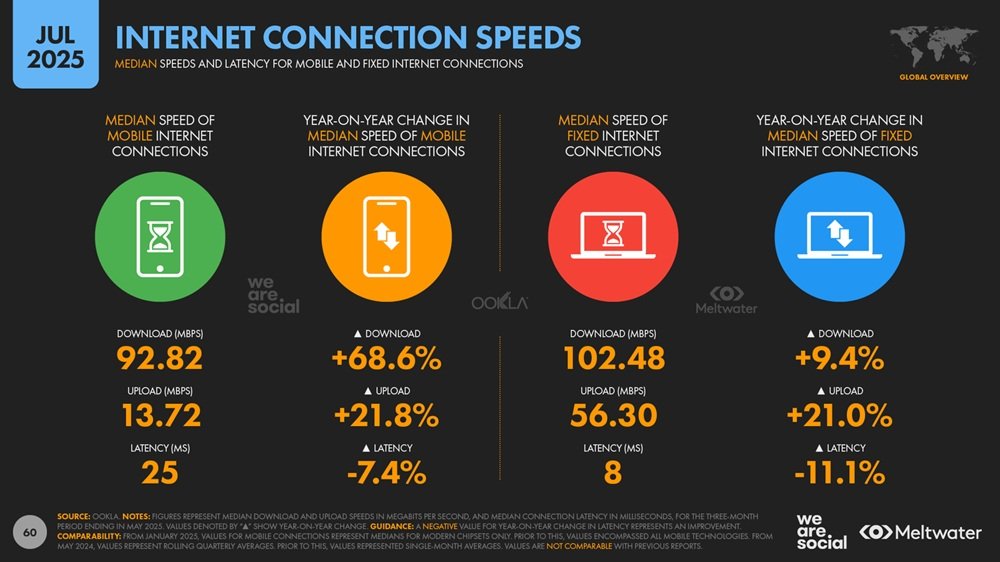
In over 100 countries, mobile connections are now faster than fixed ones. And if you’ve ever lived in Nairobi and other major towns in Kenya, you know why: it’s easier to pop a SIM card into a 5G router than to battle with endless installation delays from ISPs.
The report also highlights how dramatic this gap can be. In Syria, mobile is more than six times faster than fixed. In Tunisia, the ratio is 5:1 in mobile’s favour. Even in tech-leaning countries like Georgia and North Macedonia, mobile blows past fixed with speeds up to 3.6 times faster.
Africa shows up strongly in these comparisons too. Tunisia is a prime example of how mobile is leapfrogging fixed, and Kenya isn’t far behind in spirit. Our 5G and 4G networks may not always top global charts, but they’re often more reliable than our fiber installations.
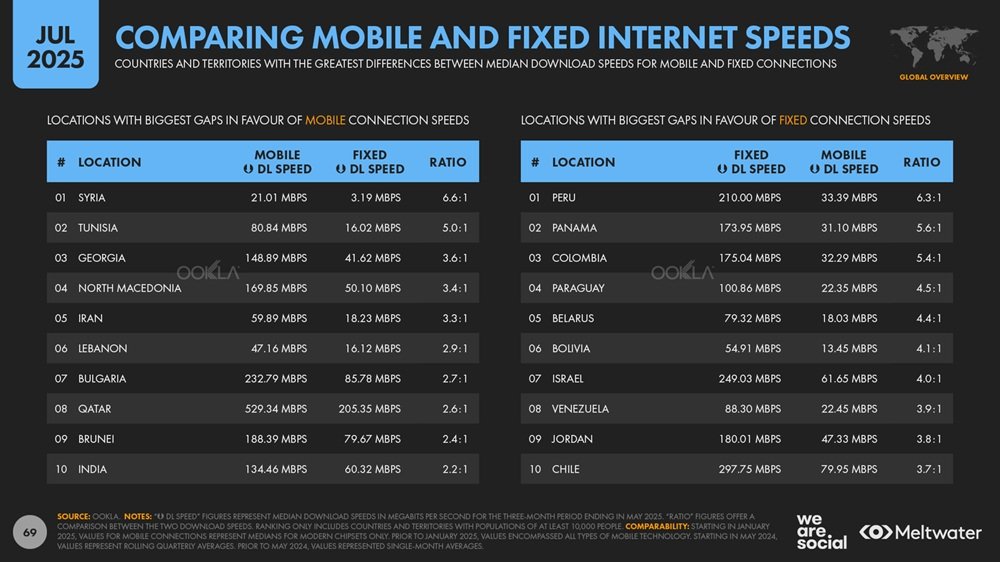
What Needs to Change?
For Kenya to climb out of the global basement in fixed internet rankings, several things need to happen:
- Investment in last-mile infrastructure: Without fiber running deeper into rural and peri-urban areas, fixed broadband will remain an elite service.
- Policy push: Regulators need to encourage more competition from the likes of Airtel, maybe even incentivize ISPs to expand beyond major cities and towns.
- Better entry-level packages: Safaricom still pushes 5Mbps and 7Mbps fixed plans, which feel downright insulting in 2025. The likes of Poa Internet, which recently got a KES 517M boost, and Zuku also need to raise their minimum packages, and so does Faiba despite starting at 35Mbps for the base plan. Selling such low speeds locks users into underwhelming experiences that don’t reflect the true potential of fixed broadband.
- Frameworks to lower ISP costs: The reason these bare-minimum packages exist is simple—cost. Laying fiber, maintaining networks, and servicing low-density areas is expensive. Without policies that help reduce installation and operational costs, ISPs will keep offering slow entry plans to recover expenses. If frameworks were in place to ease these burdens, providers could finally give Kenyans faster speeds at lower prices, which in turn would boost adoption and make fixed internet more competitive against mobile.
- Shift in strategy: Instead of fighting mobile, ISPs could start to integrate with it. Hybrid models that combine fiber backbones with 5G or satellite last-mile solutions might work better for Kenya’s unique geography.
Until these changes happen, the reality is that while the world sprints past 100Mbps, Kenya is still jogging in place with 15Mbps, just fast enough to stream YouTube at 1080p if you don’t mind the occasional buffer.
This report makes one thing clear: the global internet gap is no longer just about access. It’s about speed. And Kenya, alongside much of Africa, is falling further behind. While the rest of the world debates whether 1Gbps should be the new benchmark, we’re still trying to cross the 20Mbps line.
The irony? Kenyans are among the most mobile-savvy populations in the world, living off M-PESA and TikTok. But when it comes to fixed internet, we’re stuck in the slow lane, waiting for a future that always seems “on the way.”





